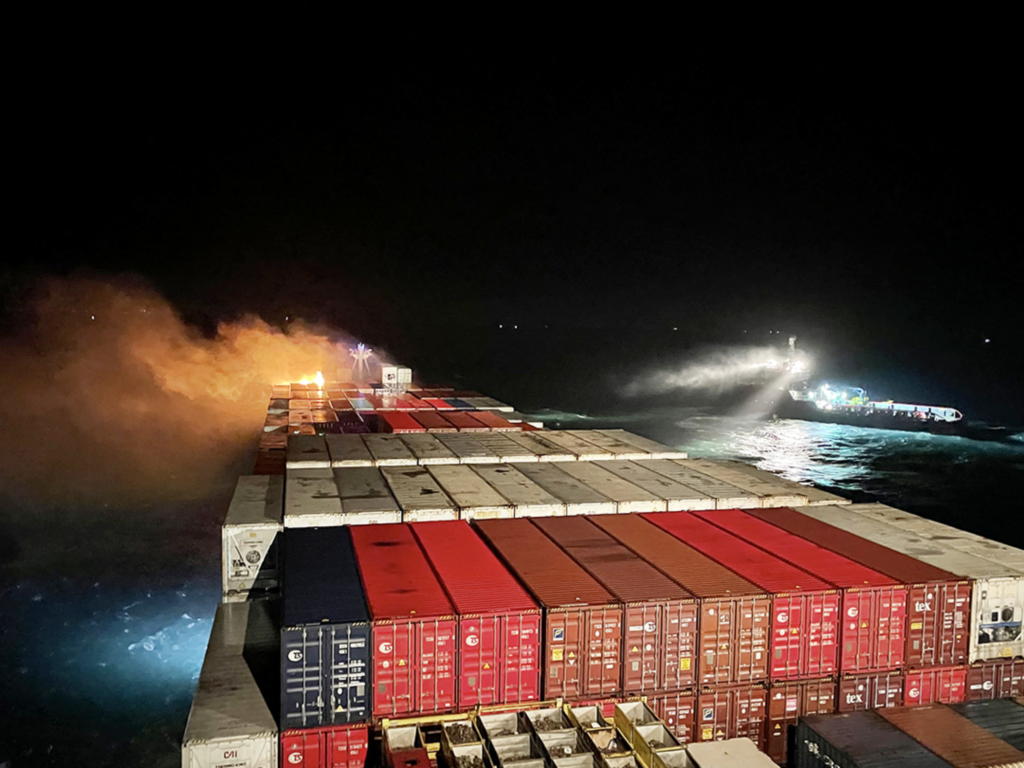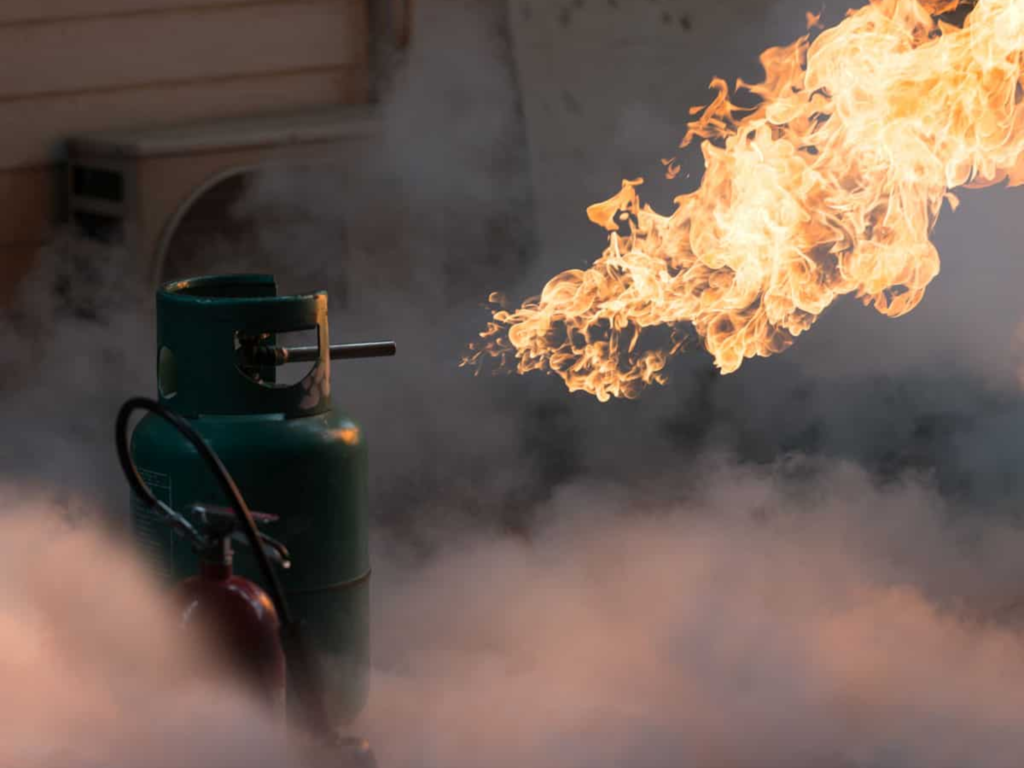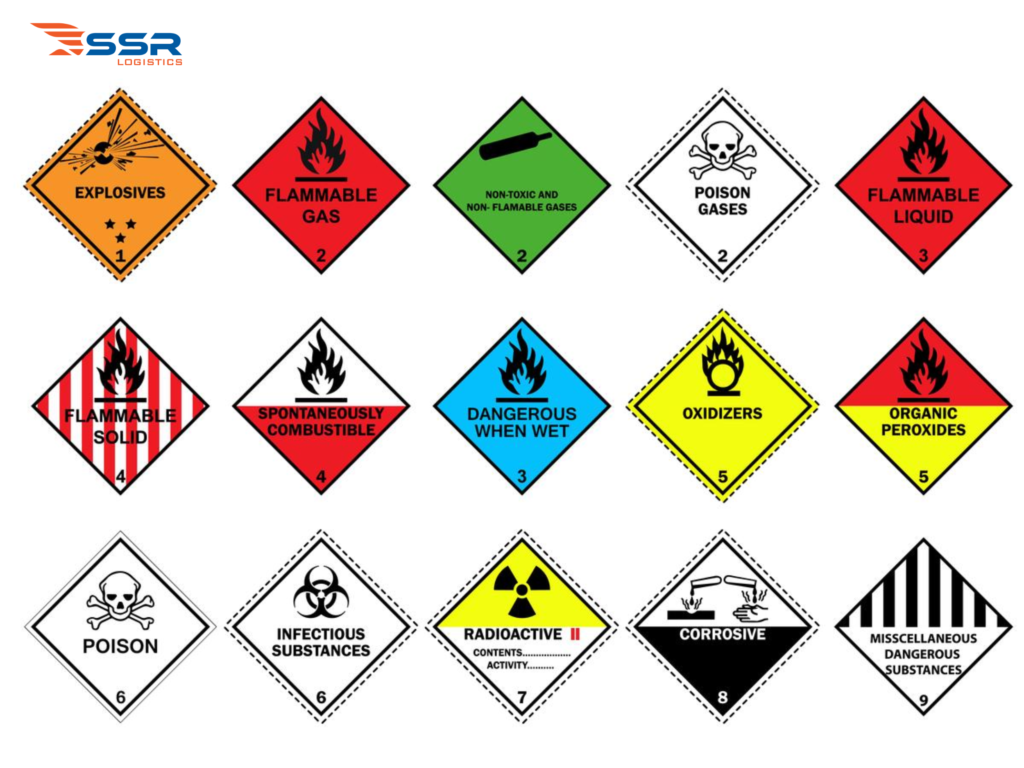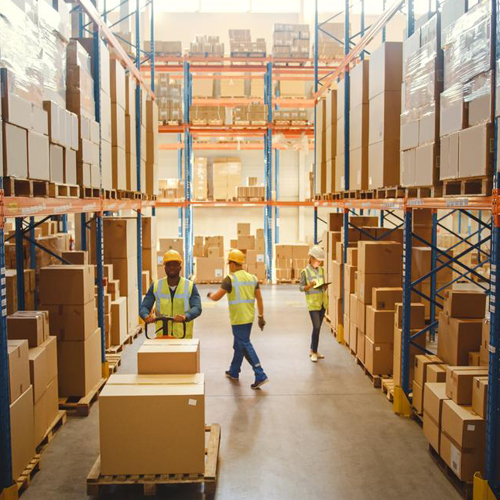In transportation, there are many types of goods, each type of goods will have different characteristics and requirements. Therefore, accurately determining the type of goods being transported is the best way to fully prepare for customs procedures, as well as avoid unnecessary risks. So, what are dangerous goods? What should businesses pay attention to when transporting this type of goods? Let’s find out the details in the article below by SSR Logistics.
 A ship carrying 2,200 containers from Ho Chi Minh City to China suddenly caught fire at sea. Source: VNExpress
A ship carrying 2,200 containers from Ho Chi Minh City to China suddenly caught fire at sea. Source: VNExpress
What are dangerous goods?
Dangerous goods are goods containing substances that pose a high-risk during transportation, including explosive, flammable, toxic, infectious, or corrosive substances and items. These items not only pose a potential risk to human life and health but can also harm the environment and affect national safety and security.
Due to the special nature of dangerous goods, packaging, marking, labeling, and handling during transportation must strictly comply with international and domestic regulations. This includes using specialized packaging, clear warning labels, and safety measures to ensure no incidents occur during circulation.
List of dangerous goods
Dangerous goods are divided into 9 different groups, based on their characteristics and level of danger.
Class 1: Explosives
Including substances and materials capable of exploding, such as fireworks, flares, industrial explosives, and other explosives.
- Divisions 1.1: Substances and articles that have a risk of strong explosion over a large area. Examples: industrial explosives such as TNT, and explosives used in the military.
- Divisions 1.2: Substances and articles that have a risk of splashing but do not cause a wide explosion. Examples: non-explosive bullets or non-explosive fireworks.
- Divisions 1.3: Substances and articles that have a risk of fire or a risk of small explosion, small splashing, or both, but do not cause a wide explosion. Examples: flares, and signal flares.
- Divisions 1.4: Substances and articles that have a significant hazard, but which are limited to a small area, and which are unlikely to cause major damage. Examples: personal ammunition and small arms.
- Divisions 1.5: Substances that are very insensitive, but which have a risk of widespread explosion under suitable conditions. Examples: low-sensitivity industrial explosives.
- Divisions 1.6: Especially insensitive articles that have a very low or almost no risk of causing widespread explosion. Examples: special safety detonation systems.
Explosives used in the military are also one of the dangerous goods. Photo source: An Giang Newspaper
Class 2: Gases
Compressed, liquefied or dissolved gases under high pressure, such as gas cylinders, fire extinguishers, or industrial gases:
- Divisions 2.1: Flammable gases are gases that can catch fire when exposed to high temperatures or an ignition source. Examples: propane gas in household gas cylinders, and butane gas in lighters.
- Divisions 2.2: Non-flammable gases that are not toxic to human health when exposed to normal levels. Examples: nitrogen gas, oxygen gas (in medical oxygen cylinders), and carbon dioxide gas in fire extinguishers.
- Divisions 2.3: Toxic gases that can cause health hazards when inhaled or exposed, even at low concentrations. Examples: chlorine gas (commonly used in the chemical industry), ammonia gas, or phosgene gas.
 The gas commonly used is liquefied gas, so it can easily leak and cause fire or explosion. Photo source: Istock
The gas commonly used is liquefied gas, so it can easily leak and cause fire or explosion. Photo source: Istock
Nhóm 3: Chất Lỏng Dễ Cháy
Flammable liquids and liquid explosives that have been desensitized to reduce their explosive potential. This is a group of chemicals that can ignite rapidly when exposed to heat or sparks. Some common examples include paint, oil, gasoline, alcohol, and industrial solvents.
Class 4: Flammable Solids
Comprising flammable solids, desensitized solid explosives, self-reactive, self-igniting substances, and substances that, when in contact with water, will produce flammable gases. This is a group of materials that can spontaneously combust or produce explosive gases when conditions are suitable. For example: White phosphorus, sulfur, matches, …
- Divisions 4.1: Flammable solids, self-reactive substances, and solid explosives immersed in liquids or desensitized. Examples: metal powders, aluminum powders, or desensitized solid explosives.
- Divisions 4.2: Substances that are liable to spontaneously ignite in contact with air or at a certain temperature without the need for an external source of ignition. Examples: white phosphorus and certain self-reactive organic compounds.
- Divisions 4.3: Substances which, when in contact with water, emit flammable gases. Examples: calcium carbide, sodium, or potassium.
Class 5: Oxidizing Agents and Organic Peroxides
These are substances that react violently with flammable or combustible materials, creating favorable conditions for fire and explosion, even in confined environments.
- Divisions 5.1: Oxidants that do not burn spontaneously but when in contact with flammable materials, will provide oxygen or similar substances to maintain and promote the combustion process. For example: Lead nitrate, Ammonium nitrate, …
- Divisions 5.2: Organic peroxides that react violently, especially when exposed to high temperatures, light, or impact. These substances can spontaneously decompose and cause fire and explosion. For example: Dibenzoyl peroxide, Methyl ethyl ketone peroxide (MEKP)
Class 6: Toxic and Infectious Substances
These are hazardous substances that can cause serious harm to human health, animals, and the environment.
- Divisions 6.1: Toxic substances, causing serious harm or even death when inhaled, swallowed, or in contact with the skin. Examples: Pesticides, Cyanide.
- Divisions 6.2: Infectious substances include biological materials containing pathogens such as viruses, bacteria, or cells that can cause infectious diseases. Examples: Blood test solutions, tissue samples
Class 7: Radioactive Substances
Materials that can emit ionizing radiation that can damage living cells, cause genetic mutations or even lead to cancer if exposed at high levels or over long periods. Examples: Uranium, Cobalt-60, Cesium-137
Class 8: Corrosives
Materials that can cause strong decomposition reactions. For example: Bleach, Batteries, …
Class 9: Other Dangerous Substances and Articles
In addition, materials that do not fall into the 8 main classification groups but still pose a high risk to humans, the environment, and means of transport.
Therefore, to determine whether goods are in the hazardous group or not, you can rely on important sources of information such as:
- Material Safety Data Sheet (MSDS): In section 14 of the “Transport Information” of the MSDS, the manufacturer will provide full information on the classification of goods according to the hazardous group.
- Labels on goods: Packages or containers containing dangerous goods must be clearly labeled, including warning symbols and international identification codes.
Notably, not only dangerous goods but also packages and containers after the goods have been completely unloaded but not completely cleaned inside and outside are still considered dangerous goods. This is because the residual substances inside the container or packaging can continue to pose a risk to people exposed or the environment. If not handled properly, these substances can cause dangerous reactions or leaks, causing further harm.
 Rely on the labels on the goods to identify which items are dangerous
Rely on the labels on the goods to identify which items are dangerous
Information on Dangerous Goods in Import and Export (Part 1) will end here. To continue reading Part 2, please click: HERE









